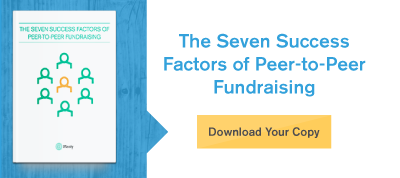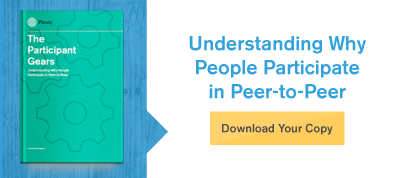2014 was a busy year for Plenty. And as a result of crowded schedules, late nights, and more hotel meals than we care to admit to, we learned some important lessons. We have shared three of these lessons so far, which focused on the idea of abundance, how to create an effective mission statement and the need to ask for help. Our fourth lesson learned is a result of busy schedules and impacts many nonprofits – it is the lack of a year-round communication plan.
You are busy, you have targets to meet and bosses to please. It’s understandable. At Plenty we see how hard nonprofit staff work on their peer-to-peer programs. You go through months of budgeting, planning, promoting and logistics to create the perfect event - an event that is over within the blink of an eye. Your event comes and goes in a matter of hours and before you know it, you are already looking at next season’s event and the large to-do list that awaits you.
It is easy to feel like the next initiative -- and the long task list associated with it -- desperately need your immediate attention. However, the sense of urgency you feel around moving onto the next task can cause you to overlook a major opportunity and create a big mistake: you forget about the peer-to-peer fundraiser.
Many times, in the rush to begin working on the next project, organizations forget to send thank you and follow-up communications to their fundraisers after their event. We typically see one of two scenarios occur:
Both approaches neglect your fundraisers and do not support year-round stewardship. In order to grow your program and retain fundraisers, it is critical that you and your team adopt this perspective. Keeping your current fundraisers means communicating year-round in a way that shows you know them, value them and still need their support. Otherwise, you risk becoming that person in your life that only talks to you when they want something from you – and that person is annoying.
The same rule applies to peer-to-peer fundraising. If you only communicate with your constituents when you need them to participate and fundraise you will not only annoy them, you will lose them. This is a serious problem. P2P programs are typically more successful when they are focused on stewarding current supporters who have already demonstrated they care about the organization and its cause, as opposed to those that try to attract new supporters.
To be crystal clear, your most effective efforts to drive increased engagement and revenue are achieved by communicating your impact to those who have already supported you – your fundraisers.
Keep these two guidelines in mind when planning your year-round communications to your current supporters:
It’s tempting to communicate with your fundraisers as part of a large generic group, but you should take every step necessary to avoid this trap. Your fundraisers are unique, important and care about your cause. Your communications should show that you recognize this. Don’t just add them to your house list after the event ends. Instead, segment them, thank them, and steward them.
You don’t have to just take our word on it either. Look at retail behemoths like Amazon, Zappos and Apple, each of which uses their customer's characteristics, behaviors and likes as the driving force behind their communications. This is the bar to shoot for.
Take small steps to improve your communications. Tell your constituents once a month that you are thinking about them and want them to know that their actions have made a difference. This will set you apart from most of your competitors, and more importantly, will help you establish a stronger relationship that leads to long-term support - the type everyone wants.
These Related Stories



Comments (2)